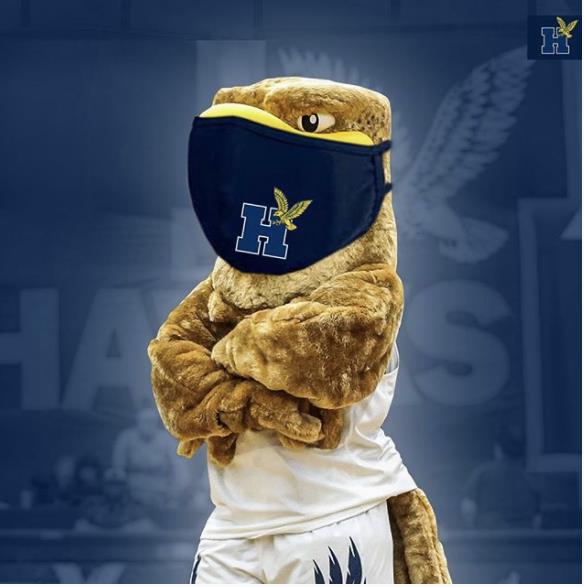As Humber gradually reopens campuses, new health and safety measures have been put in place. These measures include the mandatory wearing of masks in indoor spaces.
Masks are to be worn within all areas of campus buildings, with the only exemptions for employees working in private offices and/or personal work space where 6ft of physical distancing can be maintained. In addition, students and employees who are unable to safely wear a mask due to medical reasons will be exempt.
Humber will be providing two reusable cloth face masks to each staff or student returning to campus.
For the summer pilot currently underway, students, faculty and staff already on campus have been provided masks.
For the Fall term, requests for masks required for staff will be handled by management in each faculty and department with the Occupational Health and Safety team. This will follow the submission of completed COVID-19 Faculty/Department Plans from each faculty and department indicating the number of staff who will be required to return to campus.
Humber has centralized the process for procuring and distributing face masks and other personal protective equipment (PPE) required for protection against COVID-19. The PPE working group, with representatives from Purchasing, CDFM, SWAC, and Occupational Health and Safety, are involved in overseeing the availability of appropriate face masks and PPE for the college community.
Employees who are required to be on campus to complete their work and are unable to wear masks should inform their manager and Occupational Health and Safety. Issues pertaining to confidential medical conditions can be referred to Hiren Patel, Senior Abilities and Accommodations Specialist at hiren.patel@humber.ca. Students who are unable to wear face masks should inform their instructor or program coordinator. Issues pertaining to confidential medical conditions can be referred to Jacqueline Anderson, Associate Director, Health and Counselling at jacqueline.anderson@humber.ca.
Masks and face coverings are used to help prevent the spread of infection; they are to be used in addition to physically distancing, carrying out proper hand hygiene and respiratory etiquette, and staying at home if ill.
Access to Campus
While limited facilities have reopened, the process for accessing campus remains the same. Employees require approval from their Director/Senior Dean to come to campus, and time on campus should be limited to only what is necessary. If a staff member needs to visit campus, they must submit a request in advance and once approved, an email from management must be sent to publicsafety@humber.ca to arrange the visit at a specified date and time. They will also need to complete a health self-assessment.
As always, visit humber.ca/updates for the most up-to-date information. Info for those returning to campus is available on humber.ca/campus-return.





